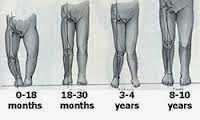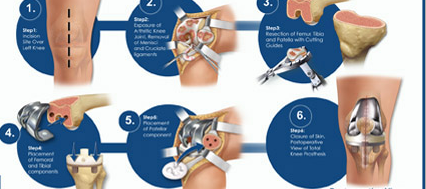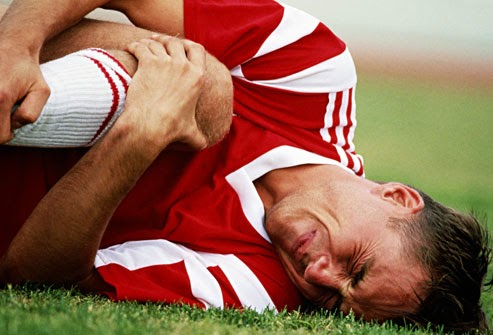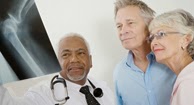As a child matures and begins to walk, knock-knees can develop as he or she tries to maintain balance on weakened legs. When a knock-kneed child stands up, his or her knees touch each other, but the ankles do not. The medical name for knock knee is genu valgum.
For adults, being slightly knock-kneed is a normal variation in alignment; many adults are somewhat knock-kneed. This is rarely a problem, and surgery is seldom undertaken to correct it. knock-knees were more likely to be injured in the intense activities of basic training.
- Knees that touch when you are standing (but ankles don’t touch)
- Excessive outward or inward knee angle that may cause pain
- Walking difficulty
What Causes Knock-Knees?
Knock-knees are common, often developing as part of the childhood growth process.
Certain diseases (like rickets) can cause permanent knock-knees, and an injury to or infection of the shin bone can also cause a knock-knee, if it's bad enough to impair bone growth. And children who are overweight are more prone to knock-knees, because their bones and joints have trouble supporting their weight.
 What If You Do Nothing?
What If You Do Nothing?In children the legs usually will straighten out as the child grows. However, if a case of knock-knees is severe or if it is still present at the age of five, medical attention is needed to prevent permanent problems.
Diagnosis & Treatment
The main way doctors diagnosis bow legs or knock knees is through physical exam. In addition, X-rays may be taken when needed to get more information about the knee joint.
Surgery is the only way to change the knee
angle — for braces, shoe inserts and physical therapy are ineffective.
Since normal leg development goes from bowlegs to knock-knees, surgery
should be postponed until the child is at least 10 years old.
 Two bones meet at the knee joint: the femur
(thighbone) and the tibia (shinbone). Surgical treatment depends upon
the maturity of the child. In younger children, whose growth plates are
open and still growing, knee alignment can be changed by tethering the
growth plates of the femur or tibia using staples. As the growth plate
grows on the untethered side, the knee will grow out of its excessive
angle.
Two bones meet at the knee joint: the femur
(thighbone) and the tibia (shinbone). Surgical treatment depends upon
the maturity of the child. In younger children, whose growth plates are
open and still growing, knee alignment can be changed by tethering the
growth plates of the femur or tibia using staples. As the growth plate
grows on the untethered side, the knee will grow out of its excessive
angle.
In older children, who no longer have open
growth plates, treatment consists of cutting, straightening and then
holding the bones of the knee in place while they heal with metal
implants, including pins, plates and screws.
Although both treatments have high success rates, they should be done only if clearly necessary and at the appropriate age.
Orthopedics India in Aurangabad provides Quality and Excellent treatment care in Knock Knees. Visit Us: www.orthopedicsindia.com
If you require more information about the treatment of knock knees for your child, Talk Free
For more details visit us http://orthopedicsindia.com and send enquiry.
Contact : Kamalnayan Bajaj Hospital
Beed Bypass Road, Aurangabad - 431 005
Maharashtra State, India.
E-mail : orthopedicsind@gmail.com
Contact : Kamalnayan Bajaj Hospital
Beed Bypass Road, Aurangabad - 431 005
Maharashtra State, India.
E-mail : orthopedicsind@gmail.com



.gif)







.gif)













 To
make the most of your new knee, you should follow your doctor's
instructions about physical activity in the weeks after the surgery.
To
make the most of your new knee, you should follow your doctor's
instructions about physical activity in the weeks after the surgery.